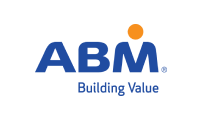A Strategic Pivot Amid EV Market Turbulence
In a notable industry development, General Motors (GM) has announced a $4 billion investment to boost the production capacity of gas-powered vehicles across its U.S. facilities. This decision marks a nuanced but strategic shift in GM’s production priorities, coming at a time when electric vehicle (EV) adoption is not progressing as rapidly as initially anticipated.
The automaker will channel this funding into three key U.S. manufacturing facilities. The primary objective is to modernize operations for internal combustion engine (ICE) models, particularly full-size SUVs and trucks, which remain the company’s most profitable segment.
Why Is GM Doubling Down on Gas-Powered Vehicles?
Despite significant commitments to electrification, GM’s latest move reflects the economic realities of current consumer preferences. While environmental concerns and regulatory pressure have driven the automotive industry toward EVs, consumer adoption remains inconsistent due to:
-
High upfront costs of EVs
-
Limited charging infrastructure in many parts of the U.S.
-
Ongoing supply chain issues for EV battery components
GM’s decision to invest heavily in traditional vehicles seems to be a tactical response to maintain profitability and market relevance as the EV ecosystem matures. A recent Bloomberg report echoed this shift, emphasizing the company’s need to serve current market demand while funding future electrification efforts.
Key Investments and Facility Upgrades
The announced investment includes:
-
$2 billion for the Arlington Assembly Plant in Texas: This facility will be retooled to support the next generation of full-size SUVs, including the Chevrolet Tahoe and GMC Yukon.
-
$1.5 billion toward the Flint Assembly Plant in Michigan: These funds will help upgrade production capabilities for heavy-duty pickup trucks.
-
$500 million at the Orion Assembly Plant: Although initially expected to transition fully to EV production, this site will now balance both EV and gas-powered vehicle output.
This diversified strategy suggests GM aims to hedge its bets—preserving its dominance in profitable gas-powered markets while maintaining its long-term EV commitments.
Balancing Sustainability With Market Demand
GM has not abandoned its electric ambitions. The automaker still targets an all-electric future by 2035 and continues to invest in EV platforms such as Ultium. However, this move signals that a balanced portfolio—one that supports both ICE and EV production—is now viewed as a more practical approach during the industry’s transitional phase.
From a sustainability perspective, the shift raises questions. Does ramping up gas-powered vehicle production contradict GM’s environmental goals? Company executives argue that continuing to offer high-demand ICE vehicles enables them to fund future EV innovations and infrastructure investments.
Implications for the U.S. Automotive Industry
GM’s investment is a barometer of broader industry trends. It highlights the challenges automakers face in reconciling ambitious climate goals with economic and consumer realities. This development may prompt other manufacturers to re-evaluate their EV timelines and continue refining ICE models in parallel.
Moreover, this decision could influence policymaking, especially around EV subsidies, infrastructure development, and emissions regulations.
Upskilling in a Changing Industry: Join the Live Online Sustainability ESG Course
For sustainability professionals, understanding the interplay between corporate strategy, market forces, and ESG commitments is critical. GM’s case is a perfect example of the balancing act between environmental responsibility and business imperatives.
To deepen your expertise, enroll in the USA Sustainability Training . This live online program is designed for professionals who want to lead on ESG issues, enhance stakeholder value, and future-proof corporate strategy.







